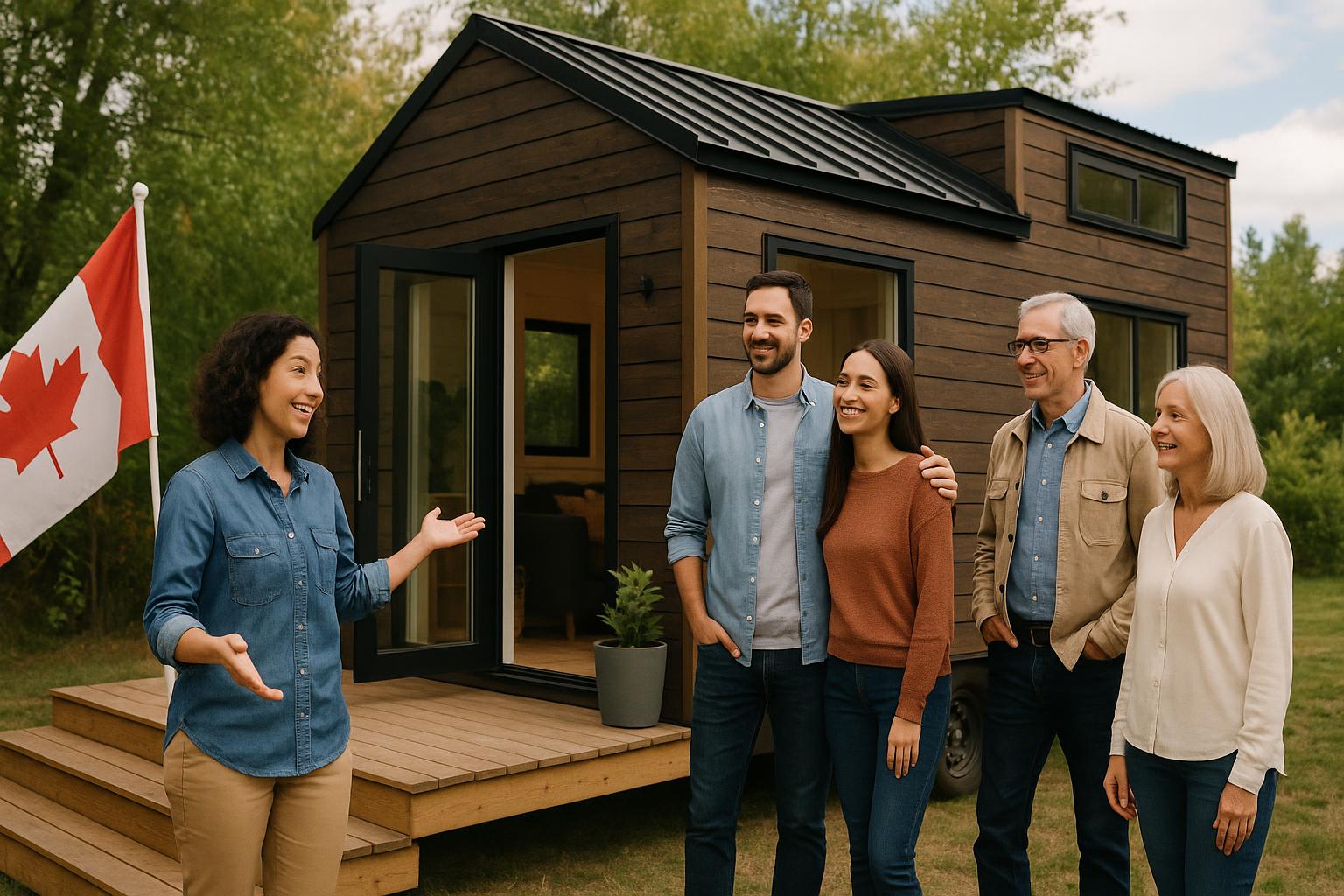
The Ultimate Guide to a Successful Tiny Home Open House in Canadian Real Estate
Estimated reading time: 8 minutes
Key Takeaways
- Engage your audience: Understand diverse visitor profiles from downsizers to eco-conscious families.
- Compliance is crucial: Secure all permits and adhere to local Canadian regulations for tiny homes and ADUs. Learn more.
- Innovative staging: Use multi-functional furniture, integrated storage, and bright décor to maximize small spaces. Storage solutions can inspire you.
- Strategic marketing: Leverage online portals and local advertising to showcase your open house effectively.
- Follow-up delivers results: Gather feedback and nurture leads to convert visitor interest into successful sales.
Table of contents
A tiny home open house is a modern event that captures the imagination of buyers and investors alike. In Canadian real estate, the trend is reshaping perceptions around sustainable, compact living.
Whether showcasing a quaint ADU or a pioneering tiny home, these events emphasize efficient layouts, eco-conscious designs, and smart use of every square foot. For additional insights on tiny house living, visit downsizing tips and tiny house living and discover minimalist living strategies that perfectly complement this trend.
Understanding Your Audience and Goals
Knowing who attends your open house is essential. From empty nesters keen on reducing maintenance, to first-time home buyers pursuing affordability, each group brings unique requirements. Investors and enthusiasts alike are also drawn by the innovative ADU showcases available.
Clearly define your open house objectives: whether your goal is to sell on the spot, build a valuable leads pipeline, or educate visitors on the benefits of ADUs. For more on ADU investment, refer to investment opportunities.
Pre-Event Planning Checklist
Effective planning begins with ensuring you meet all legal and compliance standards. Confirm that you have secured all necessary occupancy permits, energy efficiency documentation, and a thorough review of Canadian regulations for tiny homes and ADUs.
Schedule your open house during optimal conditions, typically on a weekend morning or early afternoon. Consider seasonal factors and avoid harsh winter conditions unless the property is well winterized—as detailed in our winter-proof guide.
Staging for a Tiny Home Open House: Design, Space, and Presentation
Staging is the art of making every inch count. Use multi-functional furniture such as fold-out beds, convertible sofas, and modular kitchens to illustrate how compact spaces can be both stylish and highly functional. For ideas on maximizing space, refer to tiny home storage solutions.
Adopt a minimalist décor strategy with light, bright tones and strategic mirrors, which not only open up the space visually but also create inviting ambiance. Check out our guide on interior lighting tips for more inspiration.
Marketing Your Tiny Home Open House Across Canadian Real Estate Channels
Marketing your event effectively is as important as the presentation. Utilize major real estate portals, community boards, and targeted social media platforms to advertise your open house. A well-crafted listing should emphasize the energy-saving features, innovative designs, and unique benefits of compact living.
Integrate high-quality photos and virtual tours to offer a comprehensive look at the home. For a deeper dive into market trends, browse tiny homes trend: compact living.
Presentation & Engagement Strategies During Your Open House
Create a welcoming atmosphere that resonates with your visitors. Employ friendly greeters, prepare detailed information packets, and set up a sign-in table to capture visitor details for follow-up. Share the story behind each design element—such as the benefits of off-grid living and energy-efficient upgrades—with enthusiasm and clarity.
Guide your visitors through the home by emphasizing practical features like modular kitchens and smart storage solutions. For deeper insights on kitchen innovations, see tiny home kitchen design.
After the Open House: Feedback and Conversion Strategies
The event doesn’t end at closing time. Immediately after your open house, gather feedback using digital forms or sign-in sheets to better understand visitor preferences and areas for improvement. Personal follow-ups, such as thank you messages and detailed property information, can transform interest into sales.
Nurture your leads by offering regular updates through newsletters or invitations to future events focused on tiny home innovations and sustainable living.
Conclusion: Bringing It All Together
In summary, a successful tiny home open house in Canadian real estate is built on thorough pre-event planning, innovative staging, and targeted marketing. Prioritize compliance, maximize space through creative design, and maintain ongoing engagement with your audience.
Ready to plan your next tiny home open house? Use these checklists and actionable tips to create an event that not only showcases beautiful design but also resonates with a modern, sustainable lifestyle.
Frequently Asked Questions
-
Q: What is the ideal size for a tiny home in Canada?
A: Tiny homes typically range between 100 and 500 square feet. The key is to focus on an efficient layout and smart design.
-
Q: Do I need special permits to host an open house for a tiny home or ADU?
A: Yes, it is essential to secure all necessary permits and compliance documents. For more details, please refer to our legal requirements guide.
-
Q: How can I maximize space during the open house?
A: Utilize multi-functional furniture, integrated storage solutions, and minimalist décor to create an illusion of more space.
-
Q: What marketing strategies work best for promoting a tiny home open house?
A: A balanced strategy involving high-quality visuals, online listings, social media, and local community outreach helps attract the right audience.
-
Q: Why is follow-up important after the open house?
A: Follow-up builds trust and nurtures leads, converting visitor interest into successful sales.

Leave a Reply